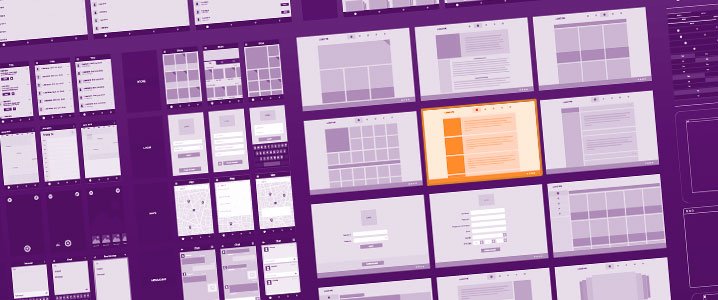Sitemaps, wireframes, user journeys, assets, copy, technical requirements, responsiveness, inputs, outcomes and everything else besides – there’s a lot to think about when planning a website. Just don’t lose sight of what you set out to achieve in the first place – a plan (even a simple one) can keep you focused.
Let’s start by asking the most important question: why do you need a website?

Having a clear goal
Seems obvious on paper, but it’s amazing how many websites get built “because we thought we’d better have one”. What do you want to achieve by having a website? What are your business objectives, and how will you be measuring success? Get that figured first and you’ll save a lot of headaches later.
Content is king
Content is what the whole site is built around, so it’s worth spending time planning and collating it before doing anything else.
Content isn’t just copy – it’s also imagery, video, downloads; anything the user can take information from, use or interact with. It’s much, much easier to plan the rest of the site in a meaningful way if you’re dealing with actual content from the very start, even if it’s likely to change. The relative importance of content, especially copy, should be the key influence on the design hierarchy, layout and user journey. The importance of sourcing brilliant, high-quality imagery cannot be overstated. This is a vital aspect of planning a website that is so often left as an afterthought.
As early as possible, build a library of these content items, and you will end up with a more coherent final product.
Fitting it all together
As you’re gathering all the content together, you can start looking at where and how it will be presented on the site – the structure. The structure should be defined by the user journey – how will your users access the content, what are the steps to get to it, and how will it be categorised and presented once they’re there?
There are a number of great tools out there for site-mapping, but often I find a well structured Word document, with headings for top-level menu items, and bullet points for sub-sections, will do the trick nicely.
Content consumption is evolving and moving away from the idea of static pages, toward dynamic content, flowed into a versatile framework – think of the popularity of the blog format. This approach means we should stop thinking about web ‘pages’ in the traditional sense, and think more about how to allow for multiple content types within one design.
Waterfall vs Agile
Now we’ve thought about what we want to go into our website, it’s worth carefully considering a couple of classic project management ‘philosophies’, and how they apply to website planning.
The Waterfall approach plans for absolutely everything, down to the smallest detail. At an extreme level, this can be a specification document that includes every page, word, image and interaction across the whole site before anything else happens. This is a somewhat inflexible approach to website planning – after all, websites are evolving, changeable things by the nature of the technology they use. Unless there are incredibly strict compliance reasons, I’d avoid this approach in favour of Agile.
The Agile method is about being able to respond to change as you go along. We can plan for desired outcomes, but remain flexible when (and that is when, not if) requirements change. What if a core business service is added half way through the web project? How is it incorporated if the whole is set in stone from the start? The Agile approach assumes regular reality checks, and uses iterations to include changes as they come along. This approach often forces the question: do we need this feature? Very useful for keeping focused.
The next stage…
Once you’ve planned and gathered all the content, thought about where it can go and how your users will get there, you can start the design process. This could begin with wire-framing and prototyping before moving on to design concepts and production-ready graphics – it could (some say should) start with a pencil and a piece of paper.

Whatever the final process, be prepared to be flexible and don’t forget our Agile-inspired approach: create, test, amend, iterate and repeat. All the other aspects of the planning process shouldn’t stop the moment design starts – you will reach points where alterations will need to be made, and needs will evolve throughout the process.
Plan to allow change, and keep a clear idea of your goals in mind at every stage. And, if you’re like me, you’ll need to order in a lot of coffee before you start anything.
If you’d like to utilise our web planning experience, drop us a line at digital@valiantdesign.co.uk to get started. If you’d like to know when our latest guides are published, signup here for our regular newsletter.